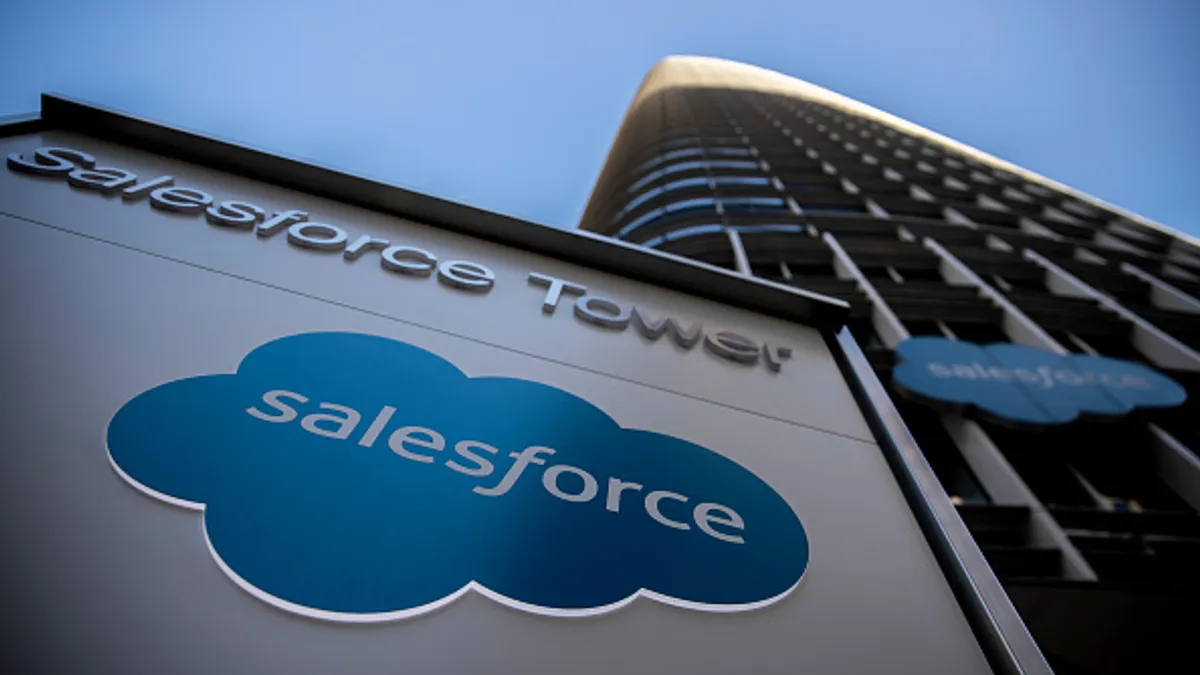Dive Brief:
-
Price hikes recently announced by software-as-a-service giant Salesforce include changes targeting “on-premises” — versus in-the-cloud — users of Tableau, a data analytics tool, according to Gartner analysts.
-
Salesforce is increasing prices for Tableau legacy on-premise subscription licenses by 9% to 33% as the company continues driving customers to its preferred SaaS model, according to a recent Gartner research note shared with CFO Dive. On-premises software is hosted on-site, rather than in a public cloud platform or remote data center.
-
“In the near term, we do not believe that Tableau/Salesforce is going to stop supporting on-premises customers, but it is a long-term risk,” Christopher Dixon, a senior principal analyst at Gartner, said in an interview.
Dive Insight:
Salesforce said last month that it planned to increase list prices an average of 9% across several of its offerings, including Sales Cloud, Marketing Cloud and Tableau, beginning in August. It marks the first time the company is adjusting list prices for its core products since 2016.
The price changes come at a time when Salesforce faces pressure from investors to increase profitability, according to Gartner. Price alterations also highlight a broader trend across the cloud software industry.
“We started to see prices ramping up after the [COVID-19] pandemic,” Hannah Decker, a director analyst in Gartner’s sourcing, procurement and vendor management team, told CFO Dive in a separate interview. “Many vendors have blamed inflation and labor rate increases.”
Almost three quarters (73%) of SaaS providers have increased their prices over the last 12 months, according to Vertice, a SaaS spending management platform provider, as previously reported by CFO Dive.
In late July, SAP announced that it was raising annual on-premises support fees by no more than 5%, effective Jan. 1. This followed the company’s decision in 2022 to boost average support fees by as much as 3.3%, beginning in early 2023. In its latest announcement, the company cited “the current market conditions, which are characterized by still high inflation rates.”
Meanwhile, earlier this year, Microsoft announced price hikes ranging from 9% to 15% for cloud products offered to customers in the U.K. and EU, starting April 1. At the time, the software giant said the move was intended to ensure that its customers would “have consistent pricing reflecting the exchange rate of the local currency to the US dollar.”
Salesforce’s price changes will impact first-time customers and existing ones who are buying into new cloud services, according to Gartner’s research note. Renewing customers may also face challenges as Salesforce moves forward with a recently reinstated policy of imposing a price increase at the point of contract renewal, the note said. The software vendor has started proposing a 5% increase on many renewals already, it said.
The new Salesforce list prices are negotiable, Decker said. While the company said its list prices will increase by 9% on average, customers may see their costs rise by greater margins in some cases, according to Gartner’s research note. For example, the base cost for the “Corporate Edition” of Salesforce’s Marketing Cloud Engagement product is being raised to $4,200 per month, a 12% increase.
Some of the rate increases in the Tableau product series are even more eye popping, but that’s only because they involve cheaper licenses, Dixon said. The on-premises subscription license for Tableau “Embedded Analytics Viewer” is going up from $9 to $12 per month, a 33% increase. The license is priced per user per month, typically with discounts based on the volume of licenses that are purchased.
A big take away, Dixon said, is that Salesforce is bringing its Tableau on-premises subscription license prices in line with SaaS fees, signaling its intention to continue migrating customers to the cloud.
The move follows Salesforce’s May 2021 cessation of the sale of new on-premises perpetual licenses for Tableau, he noted.
“Salesforce is a born-in-the-cloud vendor,” Dixon said. “They acquired Tableau, which had a large on-premises customer base. Salesforce doesn’t want that long-term. They want to sell SaaS subscriptions. You need to decide if your priorities align with that.”
A Salesforce spokesperson didn’t immediately respond to a request for comment.















